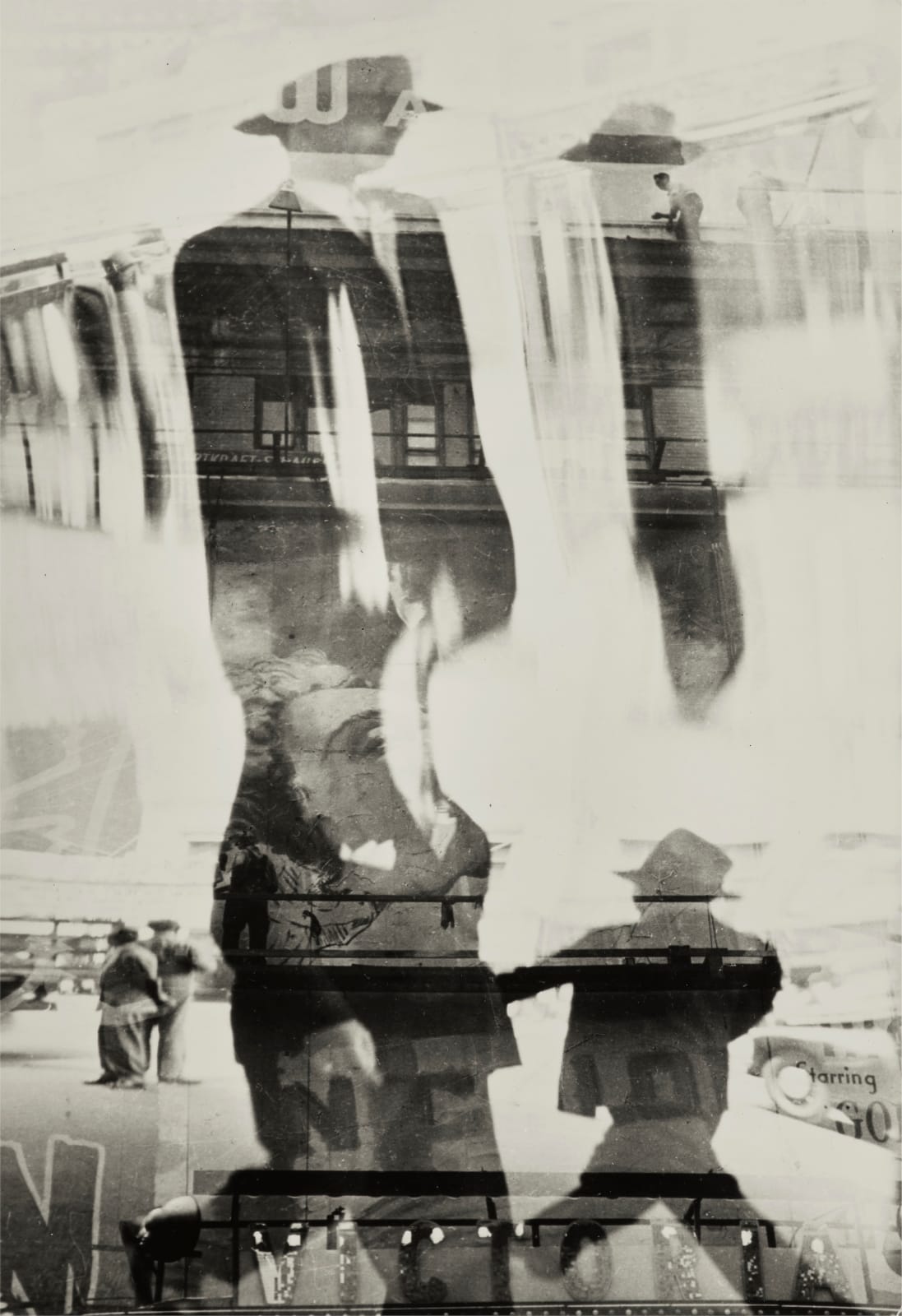
Louis Faurer American, 1916-2001
Printed by Chuck Kelton, 1980-81.
.
Paper: 35.6 x 27.9 cm / 14 x 11 in
.
Louis Faurer's "Rat Race" (1949) stands as a masterpiece of experimental street photography, capturing the psychological undertow of postwar America through revolutionary double-exposure techniques. This haunting gelatin silver print transforms New York City's bustling energy into a spectral meditation on urban alienation.
Faurer employed "sandwiched negatives" and multiple exposures to create ghostly silhouettes that float within window frames and architectural spaces. The result is a phantasmagorical vision where human figures dissolve and reconstitute like anxieties made visible. His mastery of film noir aesthetics—high contrast, dramatic shadows, and unconventional composition—perfectly captured what he saw as the hidden psychological currents beneath America's prosperous facade.
Created during a pivotal moment when "a culture of conformity reigned in America, but its shiny, happy façade masked widespread sociological anxiety", "Rat Race" visualizes the disconnection lurking beneath urban prosperity. The photograph's title itself speaks to Faurer's vision of city life as a relentless cycle where individuals become trapped in patterns of work and survival.
As a New York School photographer, Faurer rejected traditional documentary approaches for subjective experimentation. His "tireless perfectionism when it came to cropping and printing" is evident in every layered element, creating what one curator described as "an awareness of elements at the edge of our consciousness". Through visual ambiguity, Faurer achieved the remarkable: a single image containing the multiplicity and fragmentation of modern urban experience, capturing both the energy and profound loneliness of postwar American city life.